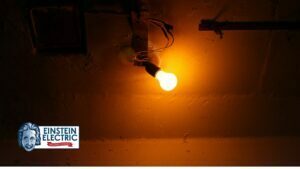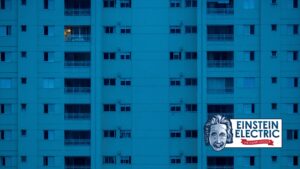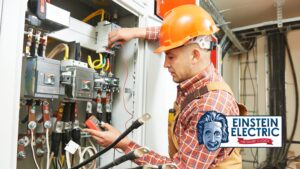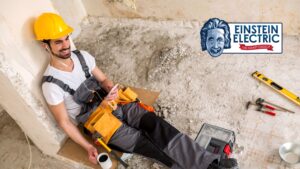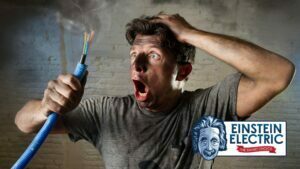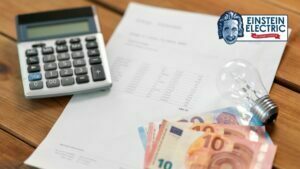Overloaded circuits can be a significant hazard in any home. It occurs when too many devices or appliances are connected to a single electrical circuit, which can cause the circuit to overheat and potentially cause a fire. Overloaded circuits are a common problem, and it’s essential to understand the dangers they pose and how to prevent them. In this blog, we will explore the dangers of overloaded circuits in your home.
- Fire Hazard
The most significant danger of an overloaded circuit is the risk of a fire. When too many devices or appliances are connected to a single circuit, it can overheat and ignite any flammable materials nearby. Overloaded circuits can cause electrical sparks, melting of wires, and ultimately a fire that can quickly spread throughout your home. Fires caused by overloaded circuits can cause significant damage to your property, and in some cases, even result in fatalities.
Overloaded circuits pose a significant fire hazard. When a circuit is overloaded, it means that it is carrying more current than it is designed to handle. This excessive current generates heat, which can lead to various dangerous situations:
- Overheating: The increased flow of electricity through the wires can cause them to overheat. This can result in the insulation around the wires melting or degrading, exposing the conductive material and increasing the risk of electrical sparks.
- Electrical sparks: When wires are exposed due to insulation damage, electrical sparks can occur. These sparks can ignite nearby flammable materials such as curtains, furniture, or paper, potentially starting a fire.
- Melting of wires: If the current exceeds the capacity of the wires, they can melt or even catch fire themselves. Melting wires can release hot debris or droplets that can ignite surrounding materials.
- Electrical arcing: Overloaded circuits can create electrical arcing, which is a discharge of electricity through the air. This arcing can generate intense heat, sparks, and can easily ignite nearby combustible materials.
- Fire spread: Once a fire starts due to an overloaded circuit, it can rapidly spread throughout the building, endangering lives and causing extensive damage to the property.
To prevent the risks associated with overloaded circuits, it’s important to follow electrical safety guidelines:
- Avoid overloading circuits: Be mindful of how many devices or appliances are connected to a single circuit. Spread out the load among different circuits to ensure they are not overwhelmed.
- Know your circuit’s capacity: Each circuit has a specific capacity, measured in amps. Make sure you are aware of the capacity of your circuits and do not exceed it.
- Use power strips and surge protectors: These devices can help distribute the electrical load and provide protection against power surges. However, it’s important not to overload power strips or surge protectors as well.
- Regularly inspect electrical cords and outlets: Check for any signs of damage, such as frayed wires or loose connections. Replace damaged cords or outlets promptly.
- Seek professional help: If you are uncertain about the electrical capacity of your circuits or if you experience frequent tripping of circuit breakers, consult a qualified electrician to assess and upgrade your electrical system if necessary.
By following these precautions, you can significantly reduce the risk of fire caused by overloaded circuits and ensure the safety of your home and its occupants.
- Electrical Shock.
Overloaded circuits can also pose a risk of electrical shock. When a circuit is overloaded, the current passing through it increases, which can lead to overheating and melting of wires, creating a potential hazard for anyone who comes into contact with them. Electrical shock can cause serious injury, and in some cases, it can even be fatal.
Overloaded circuits can indeed increase the risk of electrical shock. Here’s how it can happen:
- Exposed wires: When an overloaded circuit causes wires to overheat or melt, it can lead to exposed conductive material. If someone comes into direct contact with these exposed wires, they can receive an electric shock.
- Damaged insulation: Overheating due to an overloaded circuit can cause the insulation around the wires to degrade or melt. Damaged insulation increases the likelihood of accidental contact with live wires, which can result in electric shock.
- Faulty electrical appliances: Overloading a circuit often occurs when too many electrical devices or appliances are connected to it simultaneously. If any of these appliances have damaged cords, loose connections, or faulty grounding, they can become a source of electric shock when connected to an overloaded circuit.
Electric shocks can range from mild to severe, depending on factors such as the current strength, duration of exposure, and individual factors. The effects of electric shock can include:
- Tingling or mild jolt
- Muscle contractions or spasms
- Burns on the skin or internal tissues
- Cardiac arrest or irregular heartbeat
- Nervous system damage
- Respiratory distress
In severe cases, electric shocks can be life-threatening. It is crucial to take electrical safety precautions to minimize the risk of electrical shock:
- Avoid overloading circuits: Do not connect too many devices or appliances to a single circuit. Spread out the load among different circuits to prevent overheating and the associated risks.
- Inspect cords and outlets: Regularly check electrical cords and outlets for any signs of damage or wear, such as frayed wires, exposed conductors, or loose connections. Replace or repair damaged components immediately.
- Use Ground Fault Circuit Interrupters (GFCIs): Install GFCIs in areas where water is present, such as kitchens, bathrooms, and outdoor outlets. GFCIs can detect electrical imbalances and quickly shut off the power to prevent electric shocks.
- Educate and supervise children: Teach children about electrical safety, including the dangers of overloading circuits and the importance of not touching electrical outlets or appliances with wet hands. Ensure proper supervision to prevent accidents.
- Consult a professional: If you are uncertain about the safety of your electrical system, have it inspected by a qualified electrician. They can identify any potential hazards, suggest necessary repairs or upgrades, and ensure compliance with electrical codes and standards.
Remember, electrical shock can be dangerous, and it’s crucial to prioritize electrical safety to protect yourself and others from harm.
- Damage to Electrical Appliances
Overloaded circuits can also cause damage to electrical appliances. When too many devices or appliances are connected to a single circuit, it can cause the appliances to malfunction, leading to damage or even complete failure. This can be costly, as it may require repairs or replacement of the appliances.
Overloaded circuits can indeed lead to damage or malfunctioning of electrical appliances. Here’s how it can happen:
- Voltage fluctuations: When a circuit is overloaded, the excessive current flowing through it can cause voltage fluctuations. These fluctuations can affect the electrical appliances connected to the circuit, especially those sensitive to voltage changes. Appliances such as computers, televisions, or refrigerators may experience damage or malfunction due to the inconsistent power supply.
- Overheating: Excessive current flowing through the wires of an overloaded circuit generates heat. This heat can transfer to the electrical appliances connected to the circuit, potentially causing overheating of their internal components. Overheating can lead to electronic components failing, circuits getting damaged, or insulation melting, resulting in permanent damage to the appliances.
- Reduced lifespan: Continuously subjecting electrical appliances to an overloaded circuit can significantly reduce their lifespan. The excessive strain on their internal components and the repeated exposure to voltage fluctuations can wear out the appliances over time, leading to premature failure or the need for frequent repairs.
To prevent damage to electrical appliances caused by overloaded circuits, consider the following precautions:
- Distribute the load: Avoid connecting too many devices or appliances to a single circuit. Spread out the electrical load among different circuits or consider redistributing the devices to reduce the strain on any specific circuit.
- Use surge protectors: Installing surge protectors can help safeguard electrical appliances from power surges and voltage fluctuations. Surge protectors can absorb excess voltage and protect connected devices. However, it’s important to choose surge protectors that can handle the power requirements of the appliances you’re connecting.
- Consider dedicated circuits: For appliances with high power demands, such as refrigerators, air conditioners, or washing machines, it is recommended to have dedicated circuits. Dedicated circuits supply power exclusively to a single appliance, reducing the risk of overloading and ensuring a consistent power supply.
- Regular maintenance: Perform routine maintenance checks on your electrical appliances, including cleaning vents, checking cords for damage, and inspecting plugs and outlets for loose connections. Promptly address any issues or signs of damage to prevent further complications.
- Seek professional assistance: If you are uncertain about the electrical capacity of your circuits or if you experience frequent appliance failures, it is advisable to consult a qualified electrician. They can assess your electrical system, make necessary repairs or upgrades, and ensure proper wiring and circuit capacity to avoid future damage to appliances.
By following these guidelines, you can minimize the risk of damage to your electrical appliances caused by overloaded circuits and ensure their optimal performance and longevity.
- Electrical Code Violations
Overloaded circuits can also be a violation of electrical codes. Electrical codes require that each circuit is capable of handling the amount of electrical current required by the devices or appliances connected to it. Violating these codes can lead to fines or even legal action.
Overloading circuits is not only a safety hazard but also a violation of electrical codes and regulations. Electrical codes are in place to ensure the safe and proper installation and operation of electrical systems. Here’s how overloading circuits can be a violation:
- Maximum load capacity: Electrical codes specify the maximum load capacity for circuits, which is typically measured in amps. This capacity is determined based on the wire size, circuit breaker rating, and other factors. Exceeding this maximum load capacity by connecting too many devices or appliances to a circuit is a violation of electrical codes.
- Circuit ampacity: Electrical codes also define the maximum ampacity (current-carrying capacity) for wires used in different circuits. If the current flowing through the wires exceeds their ampacity due to an overload, it can be a code violation.
- Circuits for specific purposes: Electrical codes may require dedicated circuits for specific appliances or areas, such as kitchen appliances, bathroom outlets, or outdoor receptacles. Overloading these circuits by connecting additional devices that should have their own dedicated circuits can also be a violation.
Violating electrical codes can have consequences, including:
- Fines and penalties: Depending on local regulations and the severity of the violation, fines may be imposed for non-compliance with electrical codes. The amount of the fine can vary, but it is typically intended to enforce compliance and ensure the safety of occupants.
- Legal action: In some cases, severe violations or repeated non-compliance with electrical codes can result in legal action. This can involve legal proceedings, sanctions, or even the suspension of licenses for individuals or businesses involved in the violation.
To avoid electrical code violations related to overloaded circuits, it is essential to:
- Understand local electrical codes: Familiarize yourself with the electrical codes and regulations applicable to your area. These codes are typically established by local authorities or building departments.
- Work with a licensed electrician: When installing or modifying electrical systems, consult a qualified and licensed electrician who is knowledgeable about local codes. They can ensure that the electrical work meets all the necessary requirements and is in compliance with electrical codes.
- Plan electrical layouts properly: During construction or remodeling, plan the electrical layout carefully, considering the power demands of each area and appliance. Distribute the electrical load among different circuits and ensure the circuits are properly sized to handle the expected current.
- Regular inspections: Periodically inspect your electrical system to ensure compliance with electrical codes and to identify any potential violations. Promptly address any issues or violations discovered during inspections.
By adhering to electrical codes and regulations, you not only ensure the safety of your electrical system but also avoid potential fines and legal consequences associated with violations.
- Inconvenience
Overloaded circuits can also be a significant inconvenience. When a circuit is overloaded, it can cause the circuit breaker to trip, resulting in a loss of power to the devices or appliances connected to that circuit. This can be particularly frustrating if it happens frequently or during times when you need power the most, such as during extreme weather conditions.
Preventing Overloaded Circuits
Preventing overloaded circuits is crucial for the safety of your home and everyone in it. Here are some steps you can take to prevent overloaded circuits:
- Be Mindful of Power Usage
Be mindful of the amount of power you are using in your home. Avoid connecting too many devices or appliances to a single circuit. Spread out the use of high-power devices and appliances throughout different circuits.
- Use Surge Protectors
Use surge protectors to help distribute power more evenly across multiple devices or appliances. Surge protectors can help protect against power surges and other electrical problems that can cause damage to your appliances.
- Upgrade Your Electrical System
If your electrical system is old or outdated, consider upgrading it to handle the demands of modern living. Upgrading your electrical system can increase your home’s capacity to handle power demands and help prevent overloaded circuits.
- Hire a Professional
If you are unsure about the safety of your electrical system or need assistance with installing surge protectors, wiring, or upgrading your system, hire a professional electrician. A professional electrician can ensure that your system is safe and up to code, helping to prevent overloaded circuits and other electrical hazards.
In conclusion, overloaded circuits can be a significant hazard in your home, posing risks of fire, electrical shock, damage to appliances, and other inconveniences. By being mindful of your power usage, using surge protectors, upgrading your electrical system, and hiring a professional, you can help prevent overloaded circuits and keep your home and loved ones safe. Remember, prevention is always better than cure when it comes to electrical hazards.


